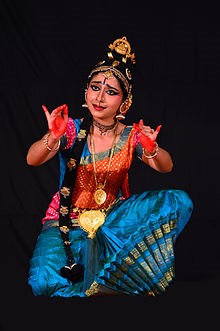Free Courses Sale ends Soon, Get It Now


Free Courses Sale ends Soon, Get It Now



Disclaimer: Copyright infringement not intended.
Context
Kuchipudi Dance History
Principles of Kuchipudi
The dance form is based on several key principles that are fundamental to its practice and performance. Here are some of the main principles of Kuchipudi:
Kuchipudi Compositions
These compositions include both traditional pieces as well as newer works created by modern choreographers. Here are some of the main types of compositions in Kuchipudi:
|
PRACTICE QUESTION Q. Discuss the importance of preserving India's classical dances as cultural heritage. Evaluate challenges and initiatives in safeguarding these art forms. |
© 2024 iasgyan. All right reserved